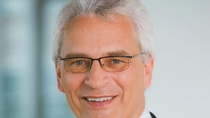Chi siamo
Every age counts

Training is no longer just about climbing the corporate ladder, it is about ensuring the whole workforce is in shape to master future challenges. Professor Dr. Ursula M. Staudinger is an expert on lifespan development and aging and founding director of a new Aging Center at Columbia University in New York. In her interview she speaks about life-long learning and the challenges for companies.
Creating Chemistry: Life expectancy of people is increasing and therefore people are working longer. What can we do to remain physically and mentally healthy throughout our lives?
Professor Dr. Ursula M. Staudinger: The human species is made for walking. We need a minimum amount of physical activity every day. It’s the same for a healthy brain. It needs to be active to stay healthy. What’s more, the brain is not made to deal with the same tasks year in, year out. It requires stimulation and new challenges now and again. However, this need is counteracted by our desire to stay in our comfort zone. We like to avoid effort and save our energies. Being aware of this ambivalence might help us to overcome it. It may also be useful to think about which incentives may help us beat that inbuilt inertia. If we as a society and as individuals manage to do that, keeping healthy and productive as we grow older should be less of a problem.

Dr. Ursula M. Staudinger
Professor at Columbia University, New York
Professor Dr. Ursula M. Staudinger is an academic leader in the field of lifespan development and aging research. This year she joined the Mailman School of Public Health as the founding director of a new Aging Center at Columbia University in New York. Previously she was Vice President of Jacobs University in Bremen, Germany, and Founding Dean of the Jacobs Center on Lifelong Learning.
How does our potential to develop and learn change throughout our lives?
When we are very little, we know nothing and we are absolutely motivated to take in everything that is around us. By early adulthood, we have mastered the basic cultural skills that we need to survive – and that influences our motivation. Cognition and learning are based on cognitive resources but they are also carried along by the fuel that comes from motivation. Cognitive resources decline with age but the rate of decline differs tremendously depending on lifestyle and contextual factors. So the older we get, the more important it is that we realize why we have to learn. We have to construct society so that people find rewards that make them expend effort on learning across the lifespan.
Are there biological limitations to our ability to learn and develop?
Even if you live to be 100, there is no reason that you cannot keep on learning. Exceptions are illnesses such as Alzheimer’s dementia. Retaining the ability to learn is part of the success of our species. In a society of longer lives, it’s essential that we realize that chronological age has no explanatory power. Age expressed in years doesn’t matter, what matters is what we do with our bodies and our minds to retrieve certain information from our genes that helps us to shape how we develop and how we age.
What can companies do to create a working environment that encourages employees’ learning and development?
Companies need to show new recruits, at all levels of qualification, that there is a long-term career pathway they can take and that training and development opportunities will be provided along the way. It is pivotal that employees do not work too long in one position. Timely activity changes are the key to maintaining productivity and job satisfaction. Companies have to invest in developing such varied work biographies together with their employees. But this investment will pay off as, according to the latest United Nations predictions, the world population will level off by 2050 and decline thereafter. Companies that provide continued development for their employees will be the winners in the competition for the best brains and hands. This is a fundamental paradigm shift. It’s a revolution.
What kind of advantages do you see in mixed teams consisting of people with different experiences, backgrounds and ages?
There was a study some years ago in Denmark of a representative sample of companies relating their profit in a given year to the age composition of the employees of that company. The study found that the most profitable companies were those that had an equal number of employees in every age range. This tells you something about the advantage of age diversity at a macro-level. But diversity is a tricky business – there are no easy answers. At the micro-level, we need to look at the task to be managed by a given team, then we can decide whether age diversity will be helpful or not. If speed is an important part of the task, age mix is not a good idea. Whereas if sustainable creativity is what is required, bringing older and younger engineers together has been demonstrated to be very profitable. On a meso-level, companies need to talk about and make visible the strengths of all age groups. At the same time, work has to be organized in such a way that the weaknesses of different age groups are compensated. If you want to maintain productivity in a workforce encompassing a range of ages, you have to make sure that every age counts.

